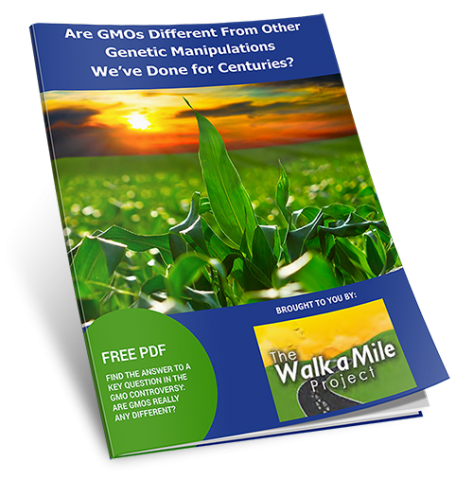Co-existence between GE, traditional, and organic crops proves to be a major complication, this time showcased by cases of GMO alfalfa contamination in the U.S.
In 2011 and 2012, USDA Scientist Stephanie Greene and her team found 404 wild alfalfa populations on roadsides, and testing revealed that over one-quarter (27 percent) of them contained transgenic alfalfa—that is, plants that tested positive for the Roundup Ready gene. Stephanie and her team believe most of these wild populations likely grew from seeds spilled during alfalfa production or transport. The researchers also found clear evidence the Roundup Ready gene was being spread by bees, which are known to cross-pollinate alfalfa populations separated by up to several miles. Though this testing was done several years ago, transgenic contamination is documented elsewhere, too.
In 2013, a Washington State farmer’s traditional alfalfa was rejected by a broker after testing revealed transgenic contamination. In 2014, China rejected numerous U.S. alfalfa shipments that tested positive for the Roundup Ready gene. Alfalfa exports to China, a major market that has zero tolerance for GE alfalfa, fell dramatically. As a result, U.S. hay prices fell and at least three U.S. alfalfa exporters suffered many millions of dollars in losses.
On a side note, the irony of China rejecting GE alfalfa cannot be overlooked. Illegal GE corn and soy crops have existed there for years, the Chinese government hasn’t stepped up to intervene, yet they refused GE alfalfa.

GMOs Contaminate Traditional Alfalfa Crops
Click the pic for original photo at: http://ecowatch.com/2016/01/21/gmo-alfalfa-gone-wild/
In addition, the transgenic alfalfa contamination exposes the failure of USDA’s “coexistence” policy for GE and traditional crops. The USDA has long maintained that GE crops can co-exist with traditional and organic agriculture.
According to this “co-existence” narrative, if neighboring GE and traditional farmers just sort things out among themselves and follow “best management practices,” transgenes will be confined to GE crops and the fields where they are planted.
Yet, there exists no shortage of GMO alfalfa contamination findings —
Oregon alfalfa seed grower Phillip Geertson presented the USDA with documented evidence of feral GE alfalfa in Idaho and Oregon in 2009, but was ignored. More broadly, the USDA exhaustively discussed this and other modes of transgenic contamination in its voluminous 2010 Environmental Impact Statement (EIS) on Roundup Ready alfalfa. In fact, buried in that EIS is data showing still earlier episodes of transgenic contamination of alfalfa dating back to the crop’s first commercial introduction in 2005.
What’s needed now is not more studies to tell us in finer detail what we already know, but regulatory action. Yet the USDA—which is embarrassingly subservient to the biotechnology industry—has failed to voluntarily enact a single restriction on GE crop growers. This forces traditional farmers to bear the entire burden of preventing transgenic contamination.
Like an invisible virus, this transgenic contamination continues to spread between GE and traditional crops. Nature has a way of taking what we manipulate and creating its own set of rules, so we have to ask ourselves — is it fair traditional farmers bear the brunt of our officials’ lack of foresight?
To read the full article, go to http://ecowatch.com/2016/01/21/gmo-alfalfa-gone-wild/



